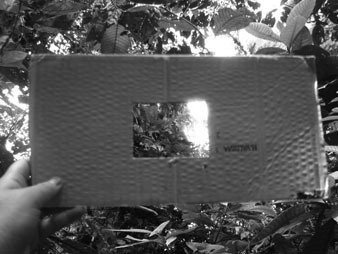Irene Kopelman
dal 25/1/2013 al 8/3/2013
Segnalato da
25/1/2013
Irene Kopelman
Motive Gallery, Bruxelles
The Exact Opposite from Distance consists of a set of drawings, made in the Amazon rainforest, through which artist pursues her 'Natural History'. In this environment saturated with colours, sedimented layers of materials, the attention is distracted by the tangled lines.

The Exact Opposite from Distance consists of a set of drawings, made in the
Amazon rainforest, through which Irene
Kopelman pursues her “Natural History”
which, after having been conducted mostly in the confined space of the studio or in
the halls of mineralogy museums, is continued today in the most remote places, on
the edge of the world; places entirely indifferent to any level of anthropocentrism,
such as the Antarctic, where Kopelman
made a series of drawings of icebergs and
glaciers, and, at present, the equatorial
rainforest. In this environment saturated
with colours, sedimented layers of materials, heat and moisture, the attention is
distracted by the tangled lines, the density of textures, the ever pulsating colours
due to the infinitely changing qualities
of light. In contrast to the immutability
of the rocks and glaciers she has previously worked on to reproduce down
to their slightest detail, here it is above
all the metamorphosis of the landscape
that Kopelman is able to render. This
she achieves, as always, through the use
of a protocol that originates in her perception of the environment, and which
allows her to frame a particular viewpoint.
Kopelman, in this way, has turned scenic
overlays and interlacings of the landscape
into her starting point, framing consecutive views by following a random line in
her field of vision until it crosses another,
a branch, a vine, a stem, all are followed
ad libitum until the space of the page is
entirely saturated.
My experience with Irene’s work
goes back to roughly ten years, to the
time when she had a studio at the
Rijksakademie in Amsterdam, which, on
the occasion of a visit, we discovered to
be hopelessly empty. Here, Irene invited close observation of the walls of the
studio, upon which we realized that each run of paint, every involuntary spot, every scratch and crack had been carefully reproduced, duplicated next to its “original”, forming a huge invisible fresco, where all possibility to distinguish between reality and artifice had become lost. In an indeed quite unusual man-
ner, Kopelman here inscribed herself not
only in the tradition of the rubbings and
decalcomanias of Max Ernst, in their
dimension of concrete and “automatic” replication of a given surface, but also
invented a process of slowing down the
gesture, as well as the gaze, forced as they
are to adjust to an image that seems, at
first, illegible. This movement of slowing
down, engendered through her struggle against the passage of time, aligns her
with artists such as Hanne Darboven and
her infinite recording of the measurement
of time, Agnes Martin and her evanescent drawings of lines and grids, or Vija
Celmins’s pencil reproductions of photographic images of the abyssal surfaces of
the sea and the starry sky.
This process of slowing down is always
at work here: the movement of the artist
on these pre-human, pre-historical natural sites, her search for a visual device
to capture and reproduce the complexity of the formation which does not present
itself as a landscape, but rather as a perennial Maelstrom, has little to do with a
desire for naturalistic objectification, but
seems, on the contrary, to be a desire to
reconnect with a vision that is not subject
to the laws of perspective, free from the
shackles of reason.
Irene Kopelman’s project does not engender ecological discourse, but takes on, to
some extent, a curious prophetic dimension through the mere depiction of these
polar or equatorial locations, whose
ecosystems are today among the most
vulnerable. Irene Kopelman’s voyages, however, take place in the frame of
scientific projects, even if, for her, observation and fascination outweigh analysis.
The hallucinatory visions of the novels of J.G. Ballard, The Drowned World
and The Crystal World come
to mind; corrupted, rotten or mineralized
worlds, for which Ballard had selected as
cover illustration, respectively, the mineral landscape of Jour de lenteur by Yves
Tanguy, and the moist luxuriance of L’œil
du silence, a decalcomania by Max Ernst.
Opening Saturday 26 January 5 – 8 pm
Motive Gallery
Rue Vandenbrandenstraat 1 1000 Brussels Belgium
Wednesday – Saturday 2 – 6:30 pm



